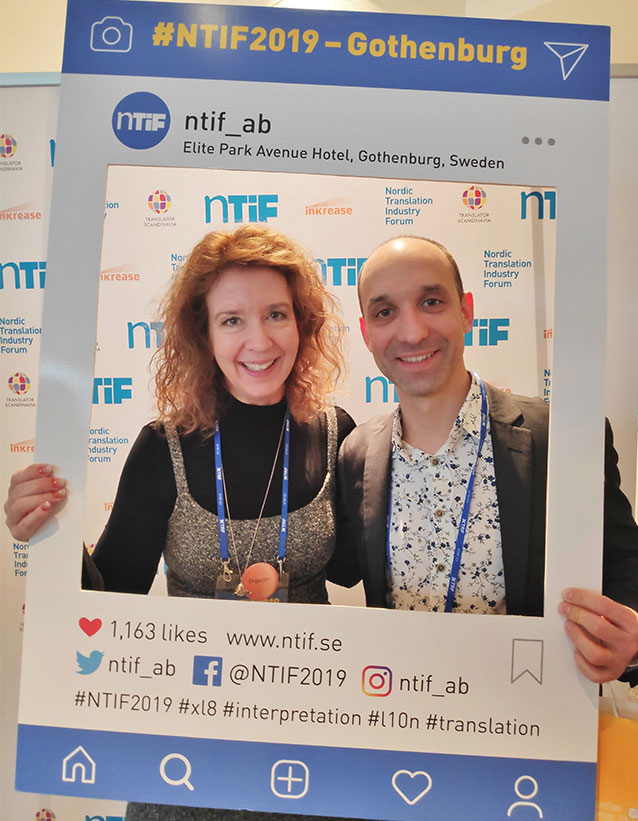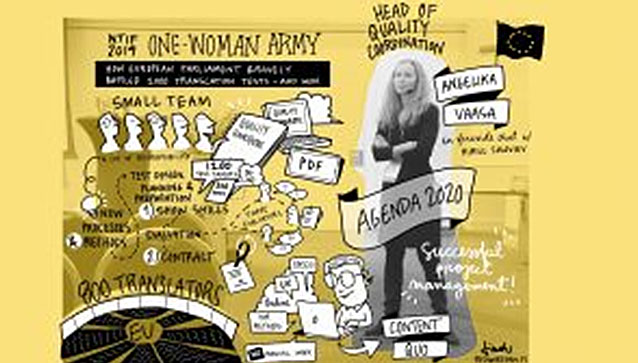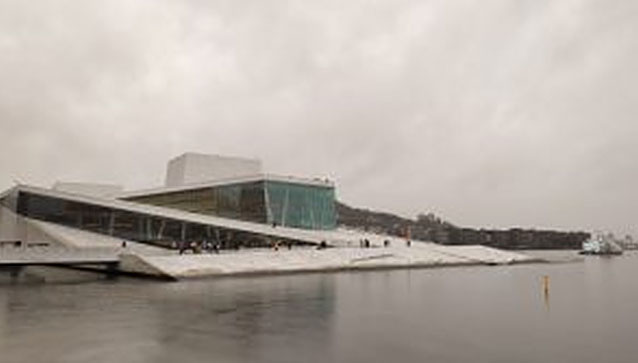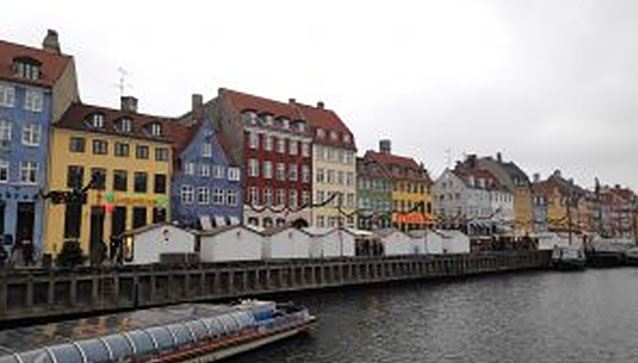
Nordic Translation Industry Forum (NTIF) 2019 in Gothenburg
During the seven years it has been running, the NTIF conference has taken place in all the Nordic countries, including faraway Iceland. This time, conference participants were invited to Gothenburg, the second-largest city in Sweden. Although promoted as a forum for language industry representatives from the Nordic and Baltic countries, the conference caught my attention too. I was not the only person from Central and Eastern Europe to go there to meet up with our colleagues from the north. What was the reason? Keep reading to find out more.
Topic of the conference
INTEGRATION AND INCLUSIVENESS
Place and time
Gothenburg, November 25-26.
Intended for
Representatives of translation companies and freelance translators, mainly from the Nordic countries.
My motivation in going there
I’ve never been to any Nordic country before, and I didn’t have any clients from this region either. My reason for going there was actually to find out more about the Nordic countries, meet some people from the industry there and look for opportunities to enter that particular market. Additionally, I was also attracted by the pre-conference workshop on sales for language service providers (LSP).
Programme of the event
The programme was very diverse. I attended only the first-day presentations, which covered various topics on translation and business in general. The second day was mostly devoted to interpretation issues.
“Strategy and Sales for LSPs” Masterclass
I started off by attending the masterclass on sales. It was very useful and highly enjoyable to listen to some tips and tricks of the trade from two gurus of the translation business:
– Anne-Marie Colliander Lind, co-organiser of the NTIF, CEO of a Swedish management consulting company and Marketing Director for LocWorld, one of the most prominent translation conferences in the world.
– Andrzej Nedoma, co-founder and CEO of a popular translation management system.
Most of those who attended the masterclass were the owners or sales managers of small LSPs, although there was also the Sales Director of the largest multi-language vendor in the Nordic region (a company which was also a sponsor of the event). Everybody was happy to share their opinions and experiences very freely, which made this workshop even more valuable.
Right after the masterclass there was a welcome reception with sparkling drinks for the conference participants, which was the perfect opportunity to start applying the knowledge gained during the previous four hours of training.
The top three things I took from the masterclass on strategy and sales for LSPs:
1) Find out more about your key accounts to build a lasting relationship.
2) Don’t limit your communication to emails with your clients – face-to-face contact is still just as valuable today as it’s always been.
3) Trust is more important for clients than your price – it’s essential to explain the value of your services to clients and tell them clearly how you can solve their problems.
The second part of the masterclass was packed full of information. In my opinion, the slides were changed too quickly to take all the information in. The overall impression was very positive, however, and I believe the event was well worth attending.
Some of the presentations I visited:

How the European Parliament Bravely Battled 1000 Translator Tests and Won
One-Woman Army: How the European Parliament Bravely Battled 1000 Translator Tests and Won by Angelika Vaasa, who works at the Directorate-General for Translation of the European Parliament as the Head of the Quality Coordination Unit. The EU tendering process is of great interest for me since we often bid for such tenders and we won a contract with the European Parliament last year. She spoke about their testing during the latest procurement, and the arduous task of evaluating a thousand test translations into multiple languages. She described the whole process: from the preparation phase, through the translation of the tests by the evaluators with follow-up feedback and improvements, to the four-week evaluation of the completed texts by three evaluators per test.
What was new about the procurement process was that the quality assessment procedures were more rigorous than ever before. Small companies and individuals were eligible to bid as well. This means that the skills of the translators are now being evaluated instead of the company’s technical processes, and the turnover requirements are also low enough to allow microbusinesses to apply.
Keynote speech by Nicholas Fernholm, who spoke engagingly about technological developments – from the first printing press to automated work processes and other innovations which increase revenues for companies but require fewer employees. His insights into the future changes predicted for the labour market were extremely thought-provoking.
I also attended one other presentation about an automotive company, where the speaker talked mostly about how they monitor user experience on their website. I didn’t find this presentation very engaging, or of particular interest to an LSP, although it was enlightening to hear from a direct client who regularly uses translation services.
My score for the quality/value of the presentations and workshops: 4 out of 5.
Schedule
There were not too many presentations, so the timing was quite simple with usually just one presentation at a time. For me, this is a much better way than having three or four presentations simultaneously, and the problems that arise when you don’t want to miss any of them.
My score for the convenience of the schedule: 5 out of 5.
Catering and gala dinner
Coffee breaks with snacks, a mingle lunch and a gala dinner. It had everything you could wish for in terms of food and the networking opportunities that were available. The only downside was the long waiting time for the meals in the fancy restaurant where the gala dinner was held. That’s when we fully grasped the etymology of the word “waiter”. However, when we were finally done with the rather formal sit-down dinner (I prefer buffet-type dinners personally), the party got started and everyone could let their hair down at last.
My score for the catering and gala dinner: 3.5 out of 5.
Access to information
As a cutting-edge event, the NTIF had a specially created app showing the conference agenda and the list of attendees. It was very helpful both for planning your time at the conference and also for further follow-ups. The website also had all the necessary information.
My score for the ease of access to information: 5 out of 5.
Business opportunities and networking
The Nordic region is undoubtedly a promising market for any business. Having clients from this area means you don’t have to negotiate over your prices again. Attending the conference allowed me to get acquainted with many LSPs from the region, find out what kind of linguistic needs their clients have and prepare a plan on how to enter that market. Admittedly, it’s not a simple task to win a client from a Nordic country, but at least this was an excellent opportunity to lay some of the groundwork.
My score for the networking: 4.5 out of 5.
My overall score for the conference: 4.4 out of 5.

Oslo Opera House

Copenhagen
P.S.:
The top 5 places I enjoyed visiting most in the Nordic countries
This conference gave me a nudge to make a fantastic trip around the Nordic region.
- First, I flew to Oslo in Norway. The most expensive city in Europe, it dazzled me not only with its high standard of living and prices but also with its one-of-a-kind attitude to the surrounding world. You won’t see too much in the way of glamour or over-the-top splendour here. Norway is powered by nature. People prefer a bike to a car, hiking in the mountains to lying on the beach; they enjoy nature in every aspect of their lives. Even their architecture is inspired by nature. For proof, have a look at the famous Oslo Opera House, which resembles a glacier. Everything is clean, practical and environmentally-friendly. It was also fascinating to see the saunas on the water at the fjordside, where the brave (or foolhardy?) locals combine relaxation in a hot sauna with dips in the ice-cold water of the Oslo fjord.
- My second stop was in Gothenburg, Sweden, which was the setting for the conference. I didn’t have much time to explore the surrounding area but, from what I could see, it is a pretty town of average size, though with not many places of interest.
- The finale of my trip was in Copenhagen in Denmark, and that was the place I enjoyed the most. There are so many amazing places there that it simply wasn’t possible to see them all in just two days. Its beautiful architecture, pretty canals (especially Nyhavn), astounding palaces and castles, the gorgeous Tivoli gardens and amusement park, Freetown Christiania with its own rules (independent of the Danish government), and countless other attractions, all make this a great city to visit.
